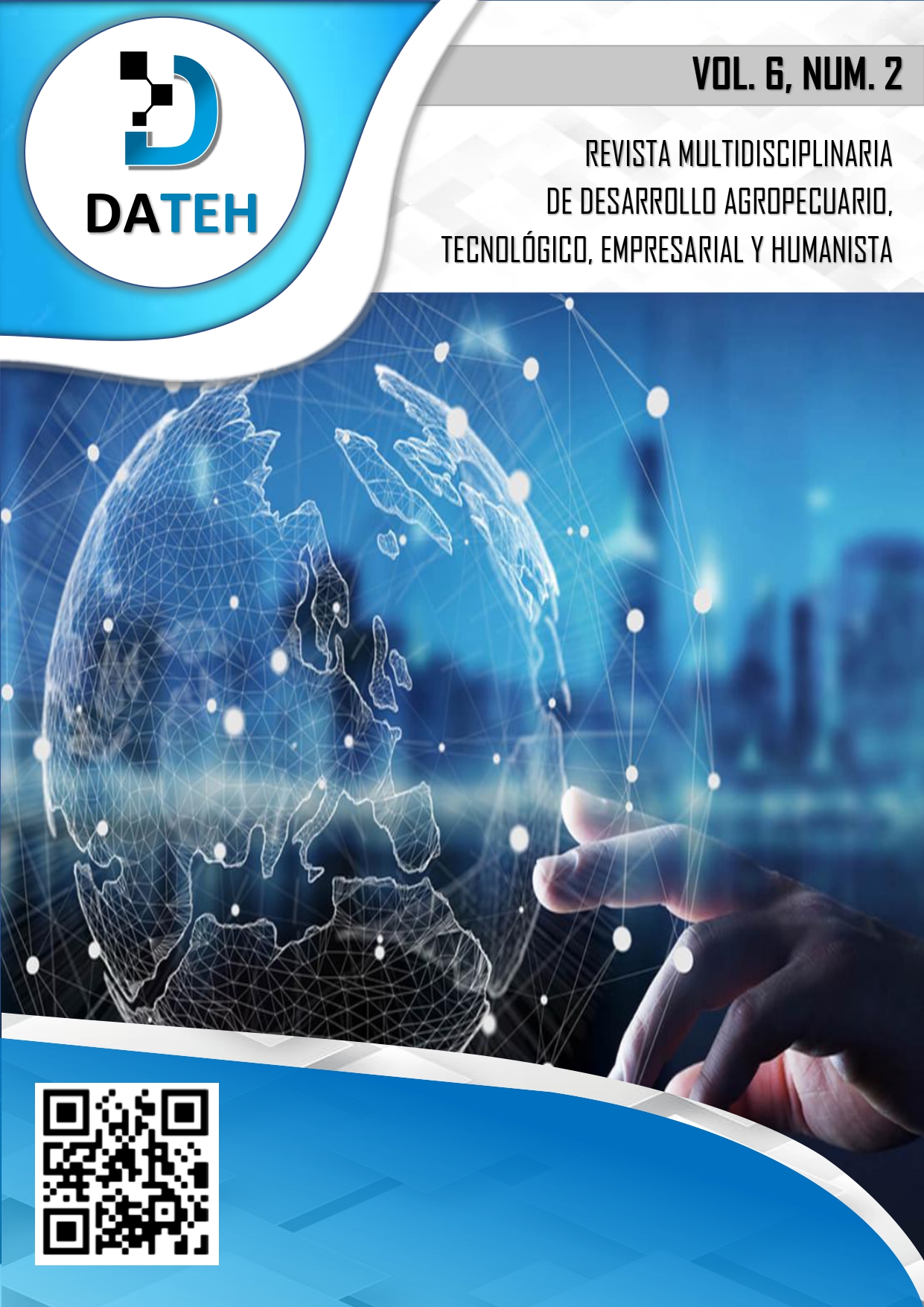Identification of losses and wastes in the dairy sector of the province of Cotopaxi
Abstract
The research work provides an overview of the dairy sector in Ecuador. National milk production in Ecuador is around 5.5 million liters per day, with the Sierra region accounting for 79.5% of total production, and the research focuses on identifying losses and waste in the dairy sector in the province of Cotopaxi in Ecuador. However, consumption of dairy products has been decreasing. The objective of this work is to identify the sources and causes of losses and waste in the dairy value chain in the province of Cotopaxi. The research has a quantitative approach, with character was carried out in three stages: Descriptive Statistics, Multiple Linear Regression Models and Field Research. They reviewed the existing literature on losses and waste in the dairy value chain and collected data from reliable statistical sources. They conducted direct research in the province of Cotopaxi to collect specific data on milk collection, wastage and producer prices. The results of the analysis addressed interactions between stages of the dairy value chain, highlighting significant changes in prices between 2015 and 2023. The two multiple linear regression models reveal significant relationships between key variables and prices in the Cotopaxi dairy sector. Analysis of the primary data reveals that losses in milk production are mainly due to handling and hygiene problems in primary production, poor maintenance of refrigeration equipment in post-harvest storage, and deficiencies in pasteurization and homogenization processes during processing. In distribution and marketing, poor storage conditions cause the highest percentage of wastage.
Downloads
References
CIL Ecuador. (6 de Febrero de 2024). Entre 2022 y 2023 el consumo de lácteos en Ecuador cayó un 12 %. https://www.cil-ecuador.org/post/entre-2022-y-2023-el-consumo-de-l%C3%A1cteos-en-ecuador-cay%C3%B3-un-12
Corporación Financiera Nacional B.P. (2023). Ficha sectorial leche y sus derivados. Subgerencia de Análisis de Productos y Servicios.
Cravero, R. A., y Montagna, J. M. (2020). Caracterización de las pérdidas físicas en la cadena de valor láctea Argentina: Oportunidades y desafíos. AJEA (Actas de Jornadas Y Eventos Académicos de, 5 (978-950-42-0200–4). https://doi.org/https://www.doi.org/10,33414/ajea.5.660,2020
Feria, A. H., Matilla, G. M., y Licea, S. M. (2020). La entrevista y la encuesta:¿ métodos o técnicas de indagación empírica? Revistas.Ult.Edu.Cu, 11(3), 62–79. https://doi.org/https://revistas.ult.edu.cu/index.php/didascalia/article/view/992
Fredes, C., Moya, J. L., Jara, M., y Reyes-Jara, A. (2023). Reducción, reutilización y reciclaje: Una revisión crítica del conocimiento científico sobre las pérdidas y desperdicios de alimentos en Chile. Revista Chilena de Nutrición, 50(3), 332–347. https://doi.org/https://doi.org/10,4067/s0717-75182023000300332
Gutiérrez, F. (2015). Ecuador declarado país libre de la fiebre aftosa. Oportunidades y desafíos. 2(1), 39–43. https://doi.org/https://doi.org/10.29166/siembra.v2i1.137
INEC. (2023). Encuesta de Superficie y Producción Agropecuaria Continua. https://www.ecuadorencifras.gob.ec/estadisticas-agropecuarias-2/
Instituto Nacional de Estadística y Censos [INEC]. (2023). Encuesta de Superficie y Producción Agropecuaria Continua. https://www.ecuadorencifras.gob.ec/estadisticas-agropecuarias-2/
Molina, R. R., Ríos-Pérez, J., y & Raby, N. L. (2021). Estrategias empresariales y cadena de valor en mercados sostenibles: Una revisión teórica. https://repositorio.cuc.edu.co/handle/11323/8929.
Padilla-Avalos, C.-A., y Marroquín-Soto, C. (2021). Enfoques de Investigación en Odontología: Cuantitativa, Cualitativa y Mixta. Revista Estomatológica Herediana, 31(4), 338–340. https://doi.org/https://doi.org/10.20453/REH.V31I4.4104
Pastor, B. F. (2019). Población y muestra. Upao, 30(1), 245-246. https://doi.org/http://doi.org/10.22497/PuebloCont.301.30121
Porter, M. E. (1998). The Competitive Advantage: Creating and Sustaining Superior Performance: With a new introduction.
Quincho-Apumayta, R., Cárdenas, J., Inga-Choque, V., Bada, W., Espinoza, G., y Carlos-Yangali, H. (2022). Metodología de la investigación científica: El sentido crítico, ante todo con uno mismo. https://doi.org/https://doi.org/10.35622/inudi.b.039
Silva, C. T., Zamora-Sánchez, R. A., y Teneda, W. F. (2024). Análisis del impacto del COVID-19 en la evolución de precios del sector lácteo en Cotopaxi. Revista Multidisciplinaria de Desarrollo Agropecuario, Tecnológico, Empresarial y Humanista, 6(1),, 7. https://doi.org/https://dateh.es/index.php/main/article/view/300
Valverde, W. R., y Teneda, W. (2024). Covid-19 y su impacto socioeconómico en el sector lácteo Ecuatoriano. Revista Multidisciplinaria de Desarrollo Agropecuario, Tecnológico, Empresarial y Humanista, 6(1). https://doi.org/https://dateh.es/index.php/main/article/view/303
Vásquez-Barajas, E. F., Bastos-Osorio, L. M., y Mogrovejo-Andrade, J. M. (2020). Metodología para la evaluación interna de una cadena de valor. . Clío América, 14(27), 401–408. https://doi.org/. https://doi.org/10,21676/23897848.3685



